Website backup is essential to safeguard your data and content and avoid accidental data loss. If your site is made with WordPress, the most popular CMS, you have several options to back up your WordPress website.
- You can use a backup plugin, which is one of the easiest and most popular methods. Just log in to your WordPress dashboard, navigate to Plugins from the left panel and click on Add New link to search and install a backup plugin. For example, you can choose UpdraftPlus or BackWPup. Both of them are free and very popular.
- For those with some technical knowledge, you can manually create backups of WordPress. Basically, what you need to backup are the web pages and database. You can use an FTP client or your hosting provider’s file manager to download those web pages from server. As to the database for WordPress, we highly recommend the phpMyAdmin tool which is the world’s highest ranking and most popular database backup tool. Most likely you can find this free tool within your hosting control panel.
- Many web hosting service providers offer free or paid backup services. Check with your host to see if they provide this service and how to enable it. Usually, they can back up your sites stuff regularly and store the backups in a secure location, such as a remote server or cloud storage service. In case of any unforeseen events, such as hacking or server issues, we can quickly restore the backups.
- Backup via cPanel backup tool is also a nice choice to create and download backups of WordPress.
In this quick guide, we will walk you through the easy steps to back up a WordPress site in cPanel with the built-in backup tool.
Method 1. Use cPanel backup tool
cPanel comes with the backup and restore tools you can use to easily back up your WordPress and other websites.
Login to the cPanel with your account credentials. Typically, you can access cPanel by going to your domain followed by “/cpanel”, e.g., www.example.com/cpanel.
Navigate to Files section. Here you will find two backup options: Backup and Backup Wizard. The same tools with different interface. Newer users may prefer to use the Backup Wizard interface because it is clean and clatter-free.
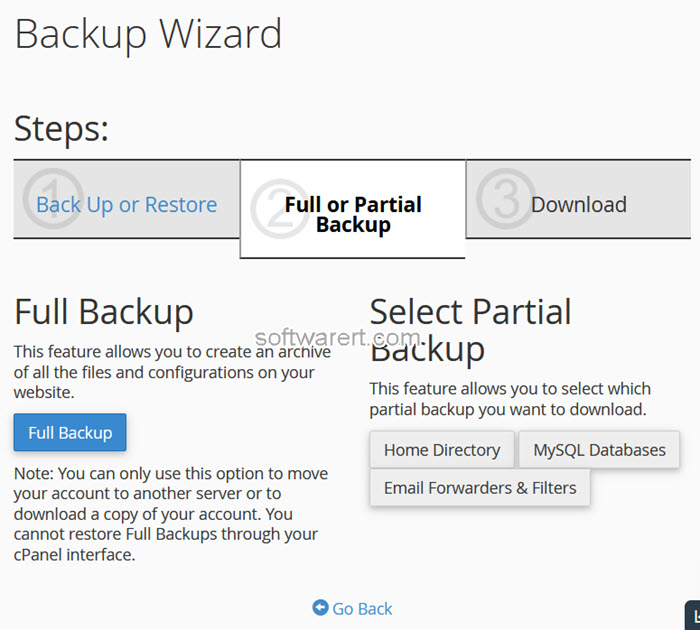
Choose your type of backup: Full Backup or select a Partial Backup. The Home Directory includes all your website files on the web server. Click MySQL Databases link to select and download any of your databases individually.
Method 2. Manually backup WordPress in cPanel
Except the dedicated backup tool, cPanel also provides users other tools that can be used to back up our websites.
Backup WordPress via FTP
For web pages, you can use an FTP manager to access and download the website files from server to your own local computer. FileZilla is a common option if you do not have any FTP programs installed on your computer.
Backup WordPress via File Manager
Alternatively, you can use File Manager in cPanel to access and manage your website files. In cPanel, navigate to Files section. Look for the File Manager option and click on it.
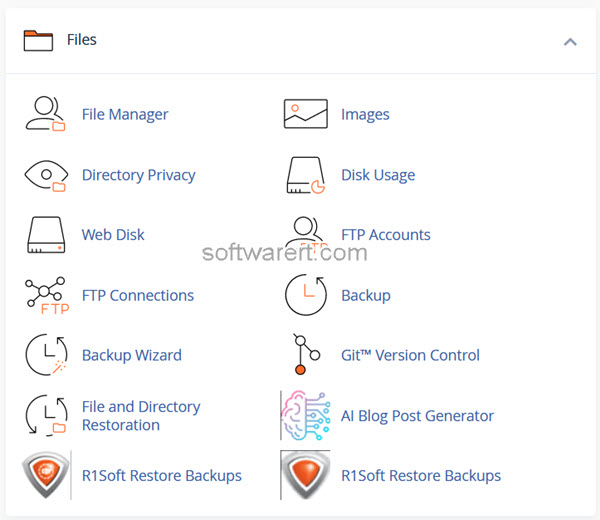
Once the online file manager opens in a new browser tab, navigate to the root directory of your WordPress installation, usually located in the “public_html” folder. Select the WordPress directory, click on the Compress button in the file manager toolbar, choose compress type or format: Zip, Tar, GZiped Tar or Bzip2ed Tar. Once the zip file is created, click to select the file and click Download from the toolbar to save it to your computer.
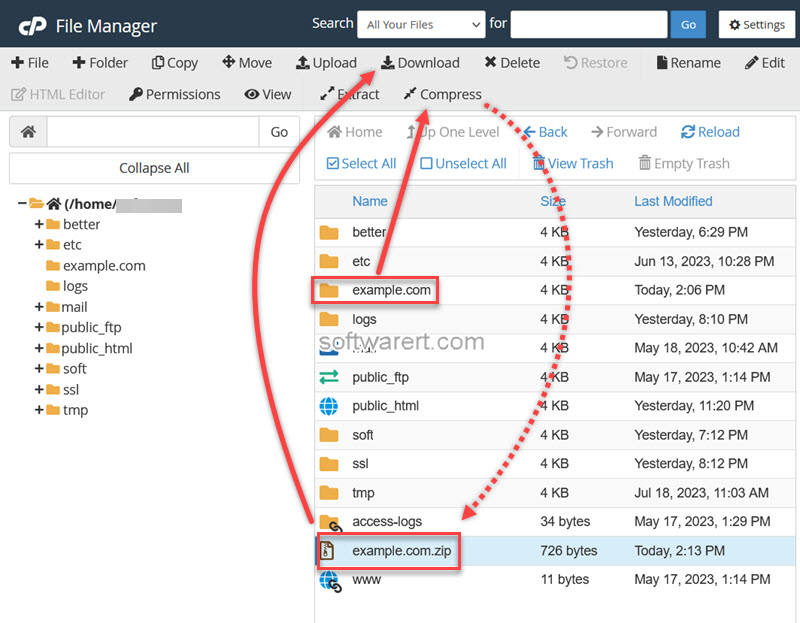
Backup WordPress Database via phpMyAdmin
In cPanel, navigate to Databases, find and click on phpMyAdmin to open it in a new browser tab or window.
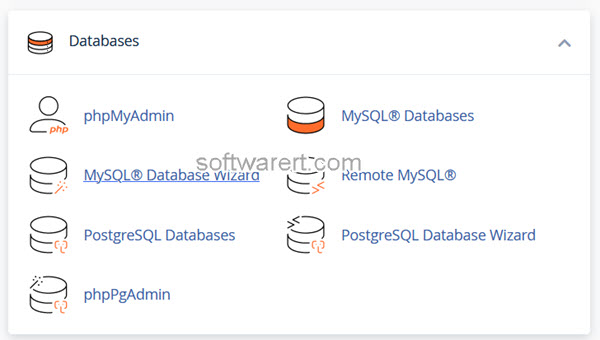
Select your WordPress database from the left navigation menu. Select the Export menu item from the top menu bar. Choose the Quick or Custom export method. For beginners, simply select the Quick export method and SQL as the output format. Finally click Go button to save the database as an SQL file on your computer.
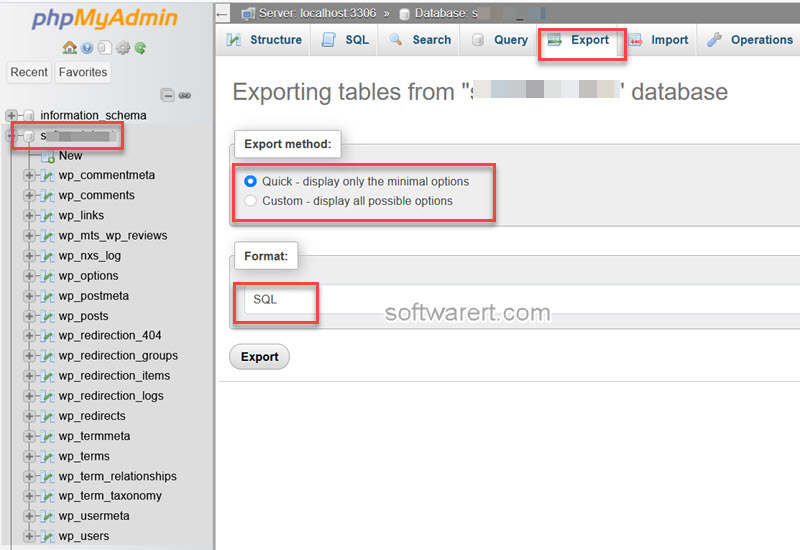
Now, you have a manual backup of both your website files and database.
